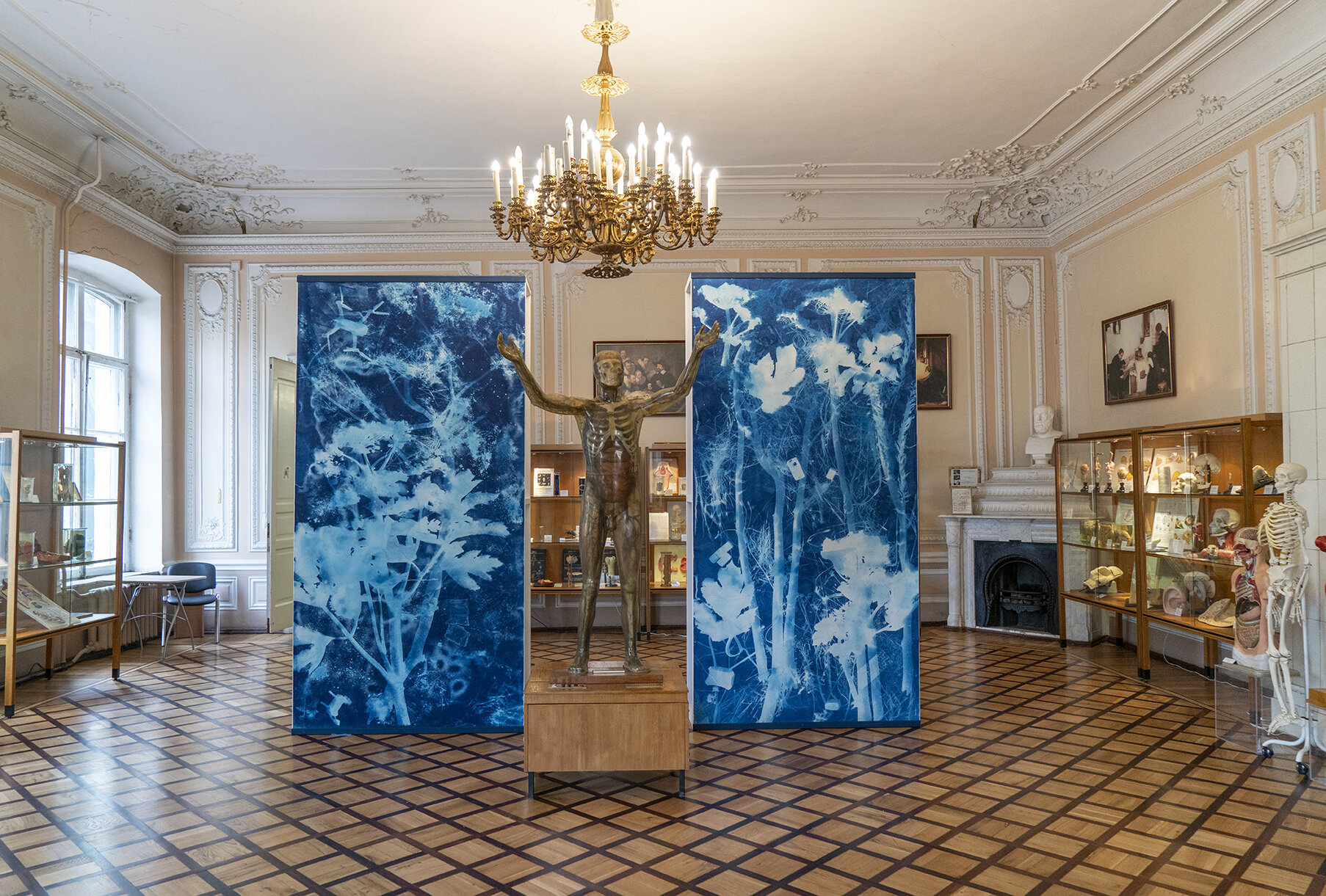
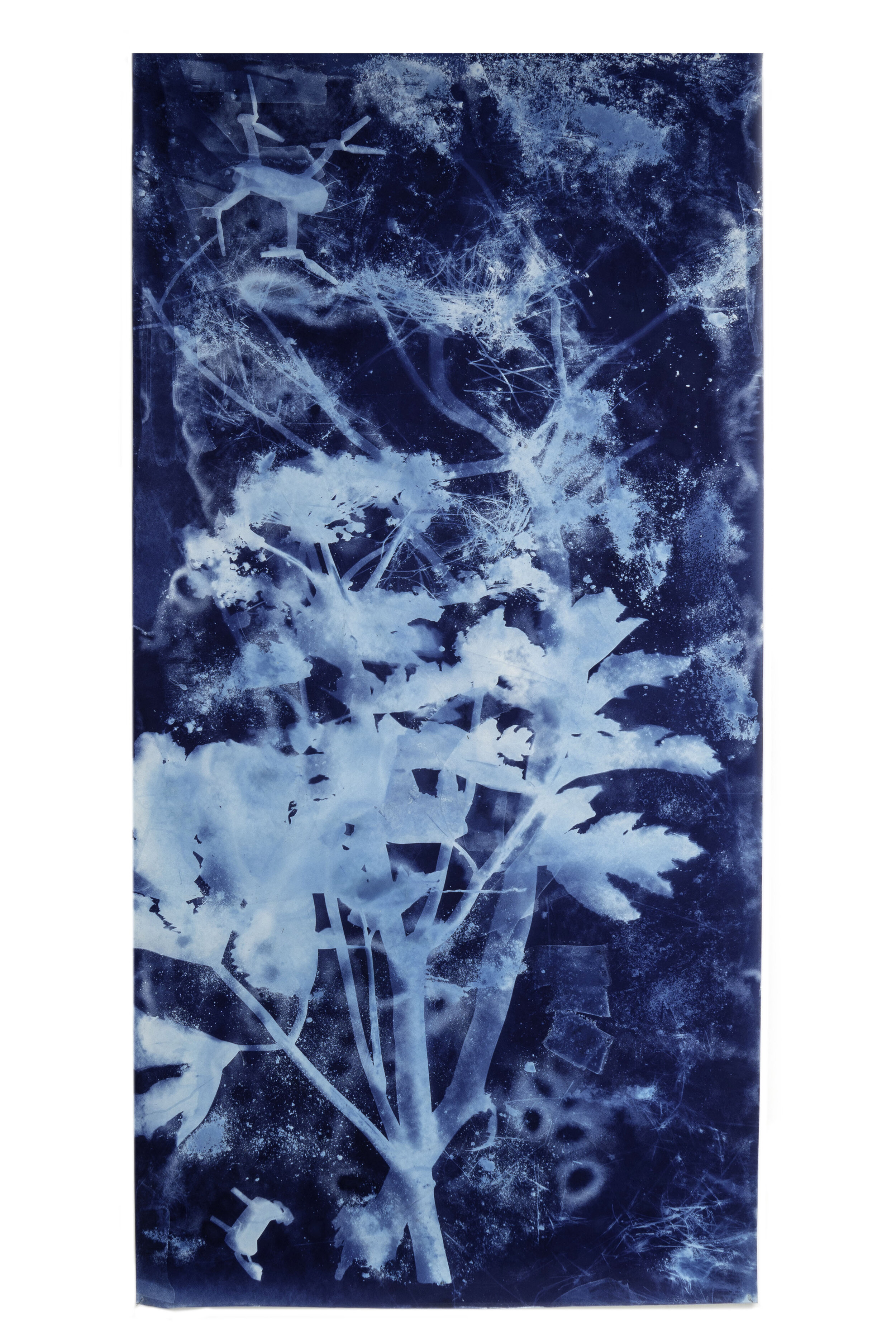
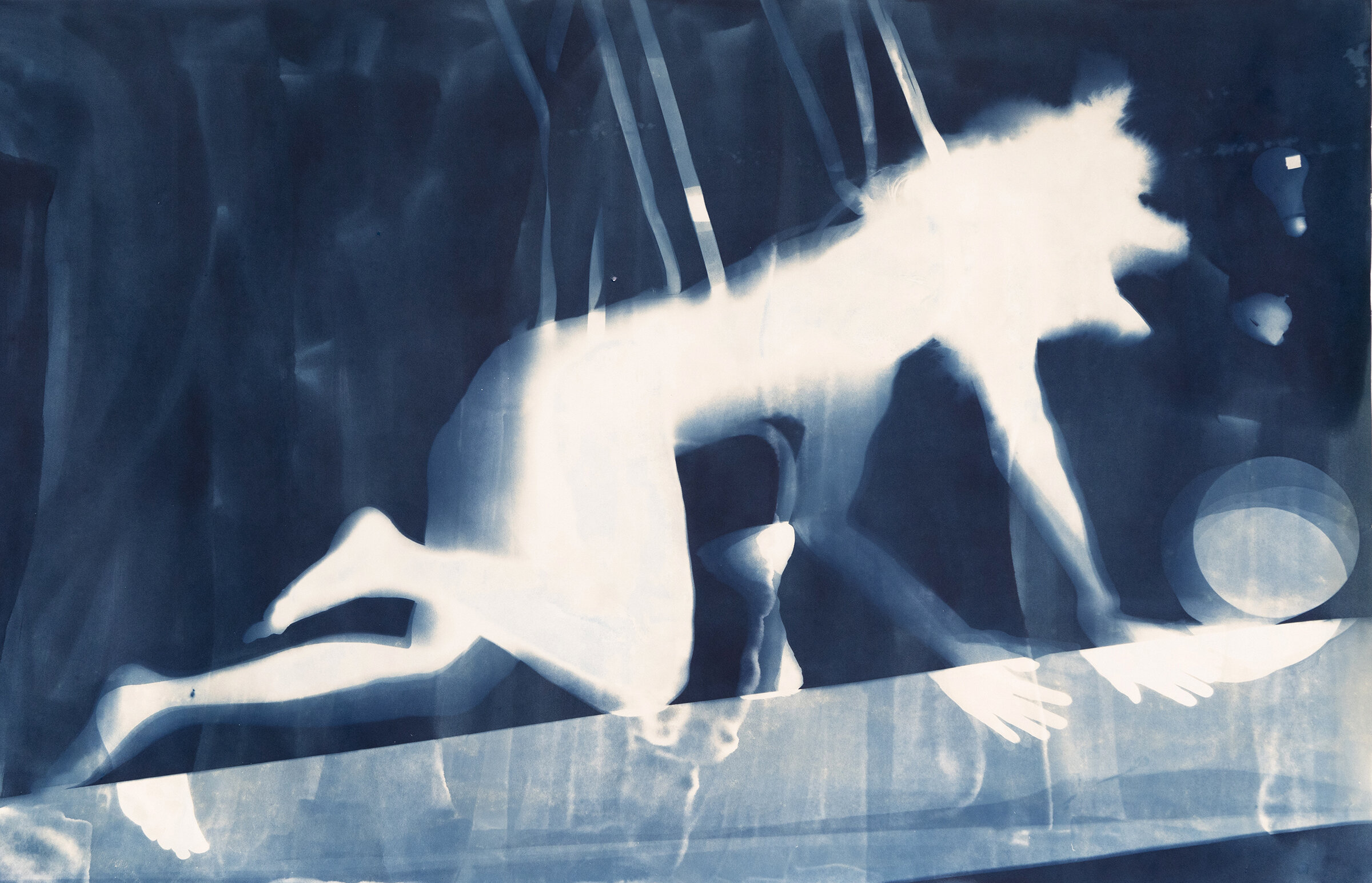
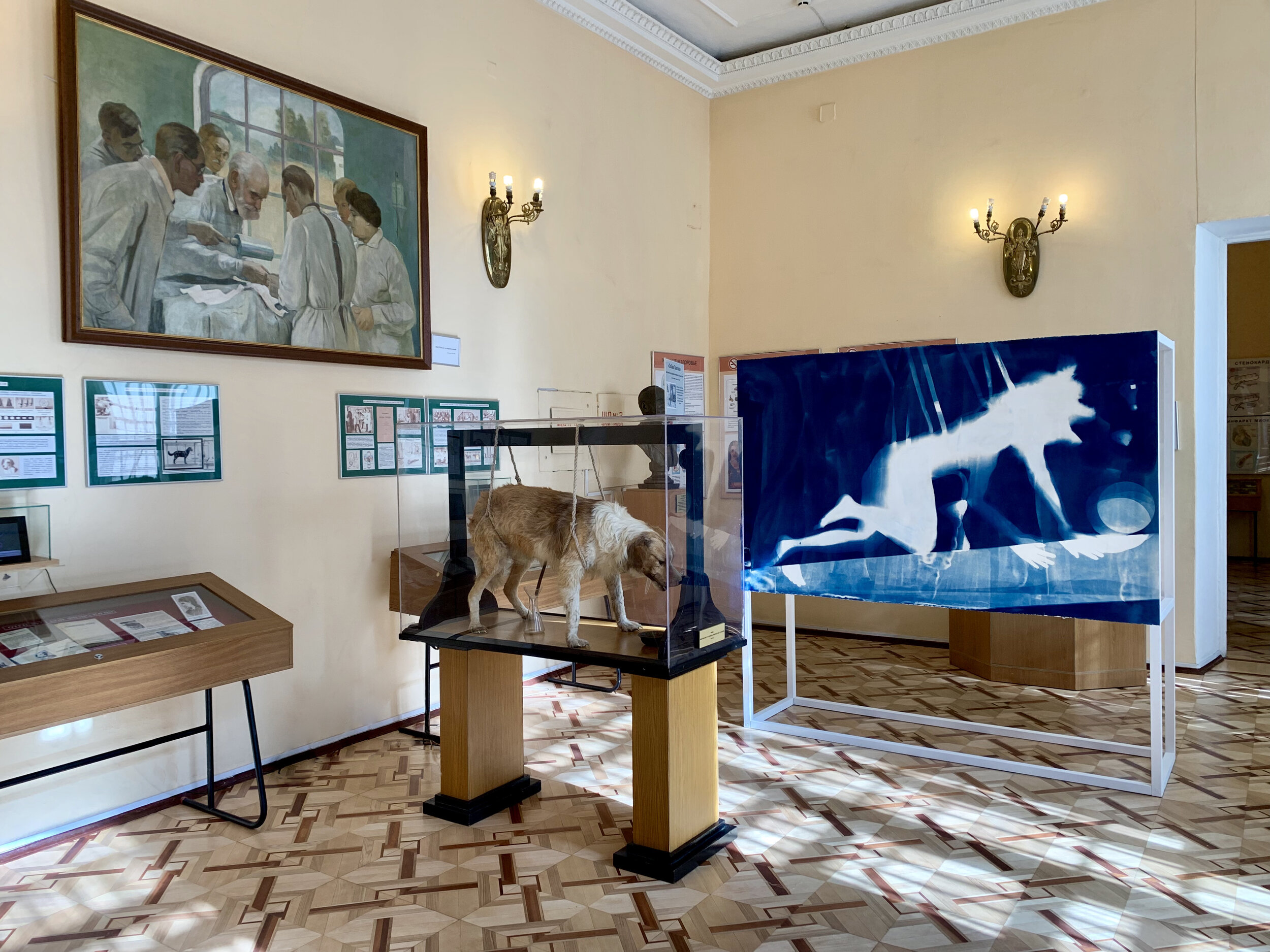
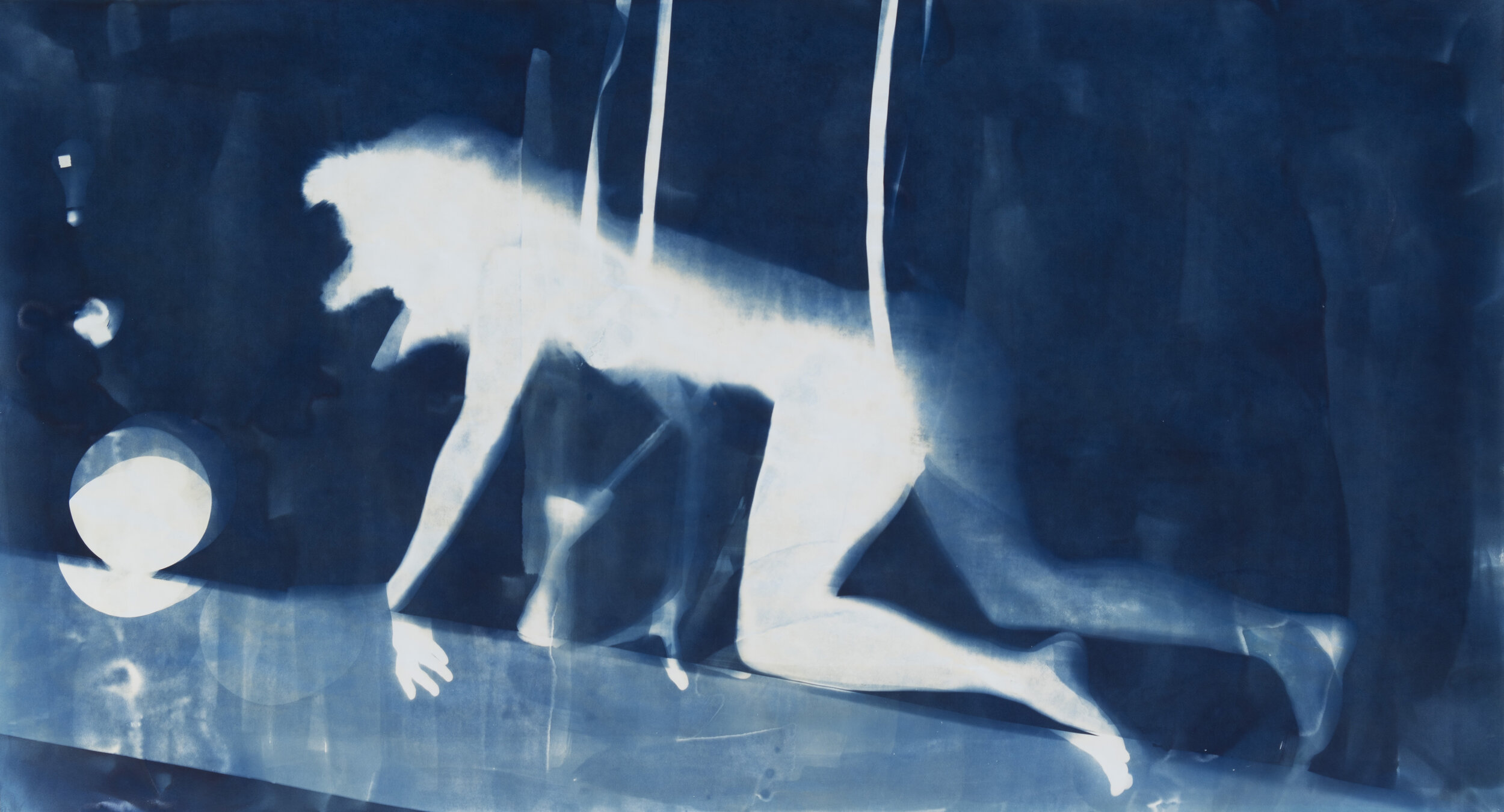
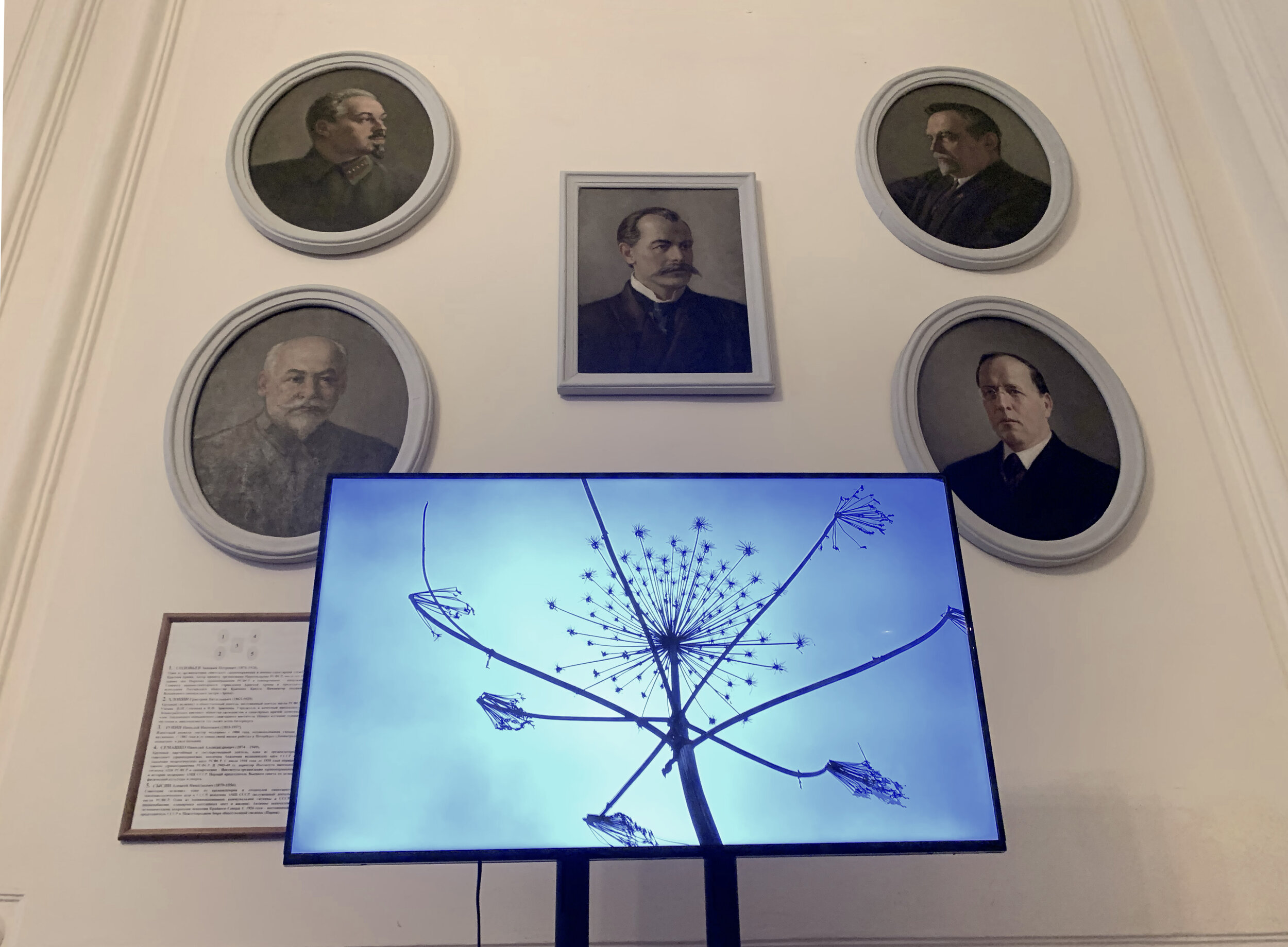
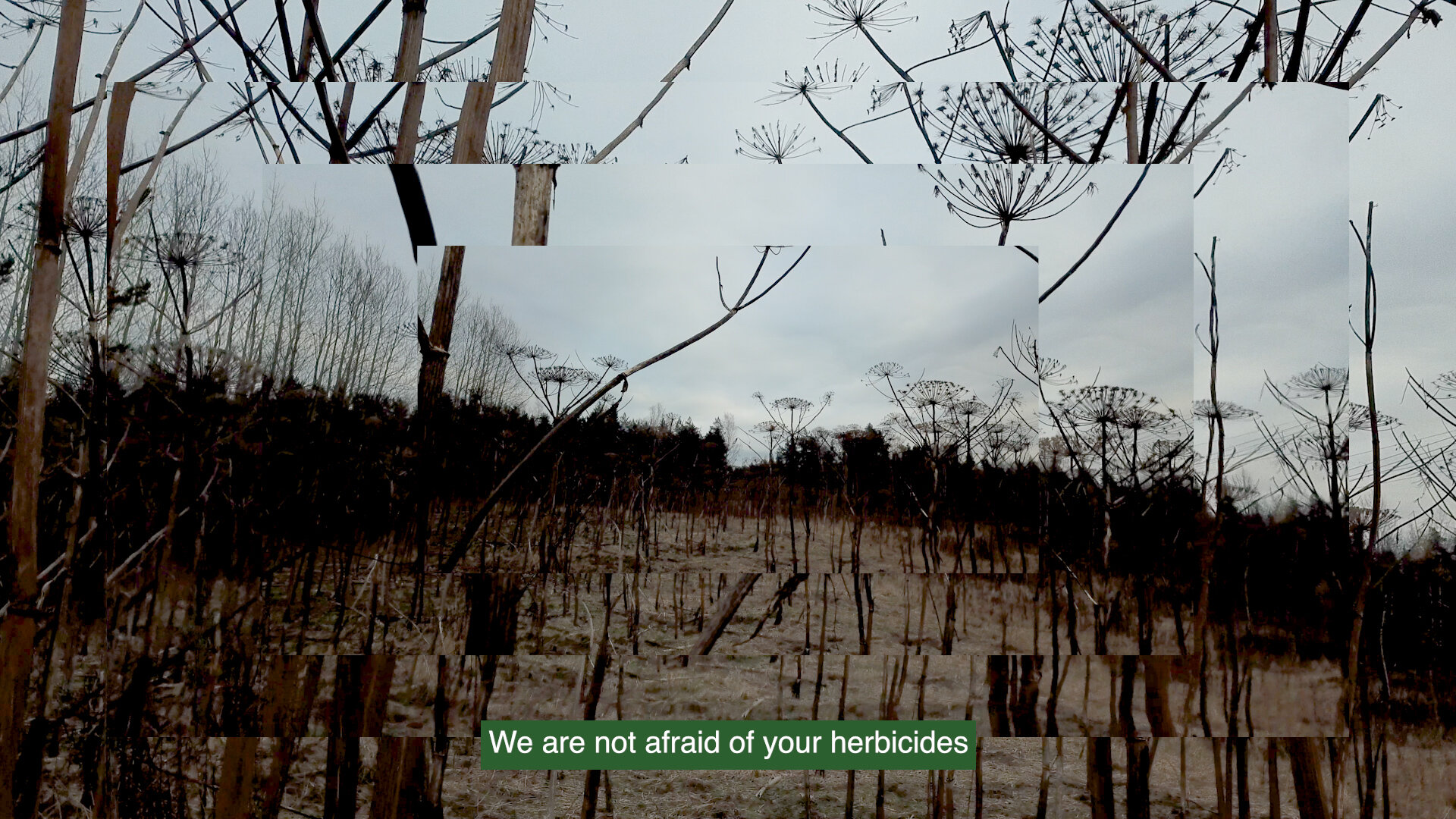
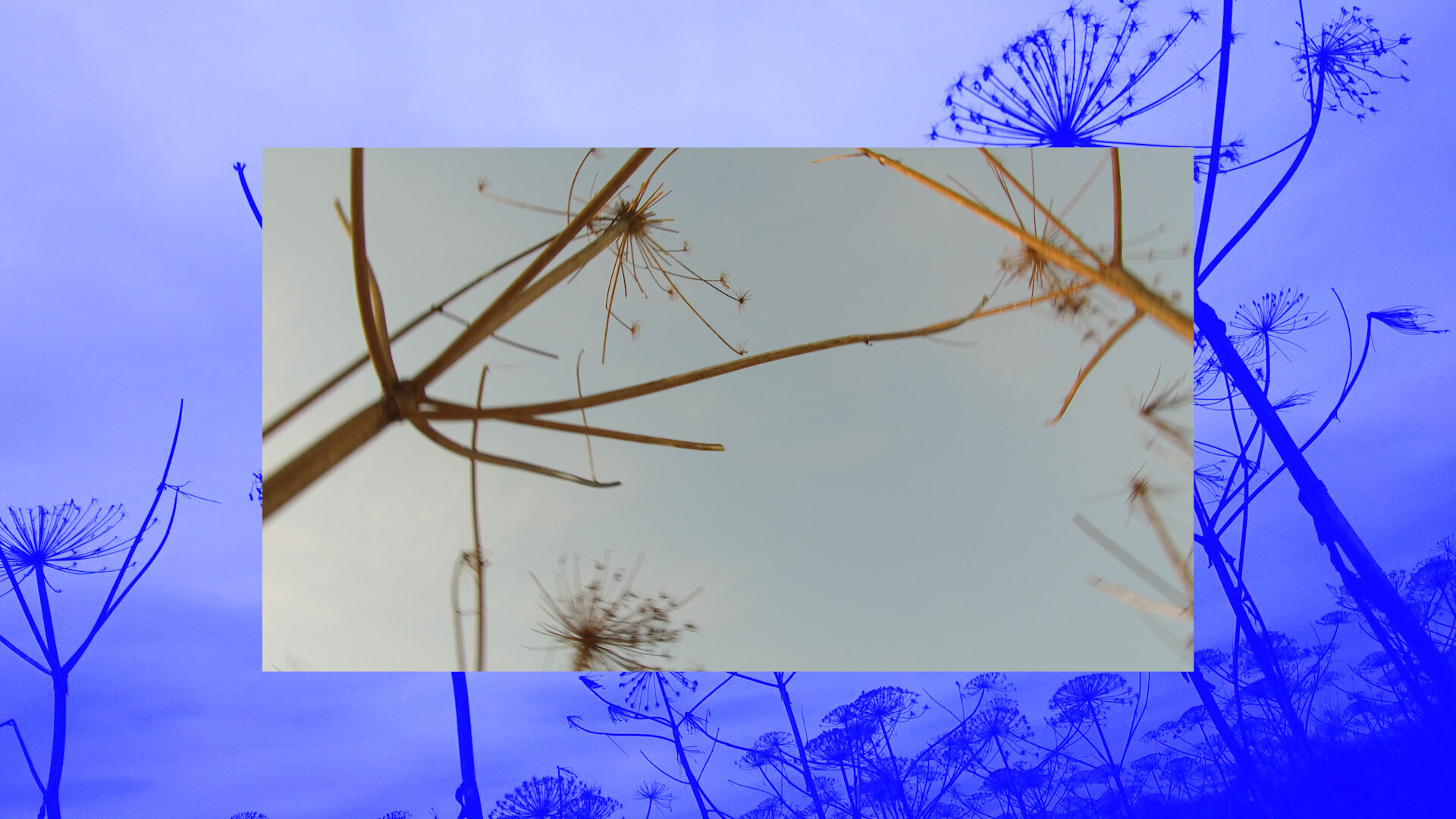


Soldiers of the Sun, or the Right to the Future Tense, 2019
Museum of Hygiene, Saint Petersburg, Russia
Contemporary Art in Traditional Museum Festival Organized by ProAre Foundation
Alexandra Lerman presents a site-specific installation consisting of a music video and a series of cyanotypes, a camera-less image-making process created by exposing photosensitive paper directly to UV light. Historically this process is linked to the British botanist and the first female photographer Anna Atkins and her album of British Algae created at the height of "natural history mania" in 1843. In response, Lerman creates her own life-size album of the age of the Anthropocene. The analog “sun prints” present an indexical image in silhouette of abstracted figures, plants, seeds, and latest image-making technological gadgets such as smartphones and drones, as well as the Giant Hogweed (Heracleum Sosnowskyi) - a spectacularly anthropomorphic plant at the center of each composition. This viral, invasive, photo-toxic species rapidly investing post-Soviet territories was initially imported into the Soviet Union from the Caucasus as livestock feed in an innovative effort to restore agriculture after World War II. Each plant distributes 70,000 seeds into the local soil, often rendering the local site useless to any potential for future farming, which presents a potent metaphor for the spirit of the earth seeking revenge for the devastation wrought through human ecological distress. Both the process implicit in creating cyanotypes and the poison born of the giant Hogweed’s foliage are triggered by the sun - one resulting in a painful and potentially deadly wound, and the other an ethereal image of the human body once-removed from the world. The video The Return of the Return of the Giant Hogweed takes as its starting point a song by the English rock band Genesis. Updated and translated into Russian the song tells the post–Soviet story of the plant from its own point of view. In an effort to dialogue with the site of The Museum of Hygiene Lerman has also produced a series of cyanotypes inspired by the taxidermied Pavlov’sDog on display in the museum’s collection. Functioning as self-portraiture, Lerman assumes the role of the feral, feminine subject in Pavlov’s classical conditioning experiments. By engaging with Pavlov’s work in the era of the digital, Lerman recontextualizes the dog’s presence in the museum as a timely, symbolic reminder of our newly developed algorithmically-conditioned addiction to social media and its dopamine-fueled discontents.